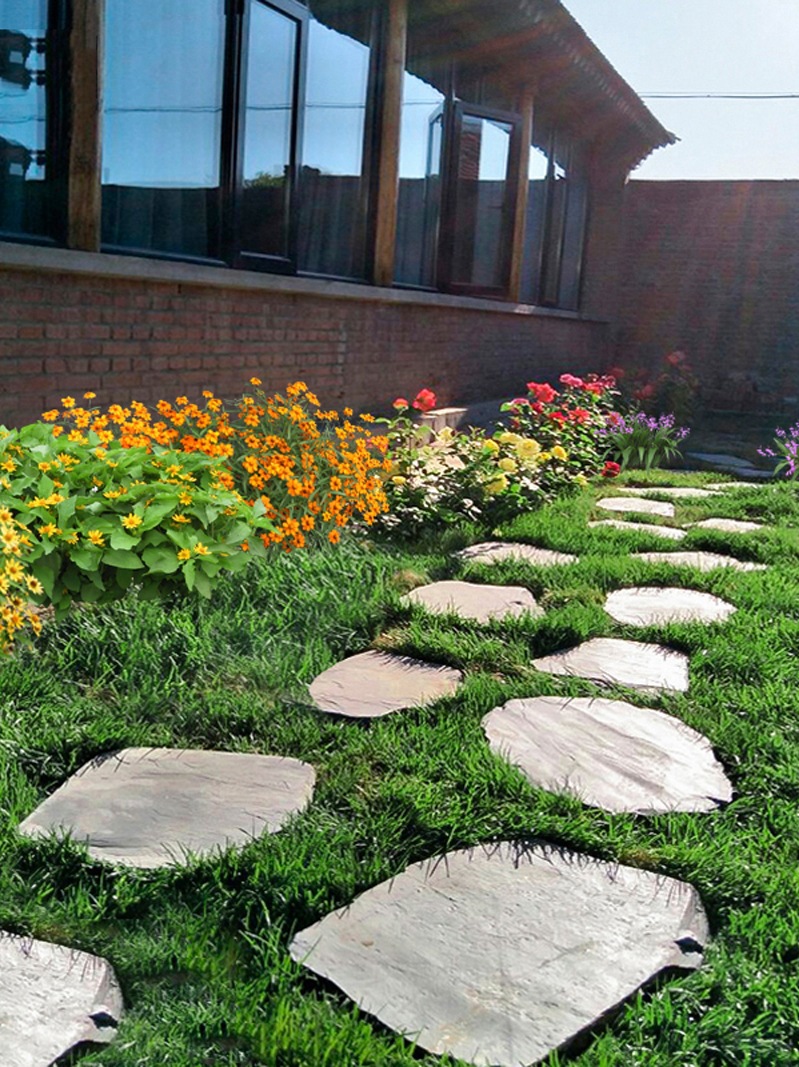|
In garden construction and outdoor landscape design, choosing the right paving material is crucial.
Paving stones have become a popular choice due to their unique natural texture, diverse colors, and inherent durability.
This article will delve into the types of paving stones, installation techniques, maintenance, and how to enhance the aesthetics and functionality of outdoor spaces using stone slabs.

Types of slabs paving stones
The types of paving stones are diverse and can be mainly divided into two categories based on material: natural stone slabs and artificial stone slabs.
Natural stone slabs include granite, limestone, slate, and sandstone, each with its unique texture and color.
For example, granite is hard and wear-resistant, suitable for areas where frequent walking is common; slate is favored by many designers due to its distinct layered texture.
Artificial stone slabs are produced through industrial processing to mimic the texture and color of natural stones, commonly including cement molded stone slabs and composite resin stone slabs, characterized by low cost and a wide variety of colors and styles.
Laying techniques
Laying stone slabs is a skilled task, and good laying methods not only affect the aesthetics of the road but also impact its safety and durability.
A solid foundation is crucial for successful laying.
First, the ground needs to be leveled to ensure the base layer is firm and smooth.
Next, a layer of weedproof fabric should be laid on the ground before laying the stone slabs to prevent weeds from growing through the gaps in the stone slabs.
Additionally, attention should be paid to the gaps between the stone slabs during laying; appropriate gaps can not only handle thermal expansion and contraction but also ensure smooth drainage.
To maintain overall aesthetics, it is necessary to choose suitable jointing materials, such as sand or jointing compounds, to secure the stone slabs and reduce weed growth.
Tending
After the stone slab pavement is laid, although it is durable and robust, proper maintenance is equally important.
The stone slab pavement should be cleaned regularly to remove dirt and debris from the surface.
Cleaning with a soft-bristled brush and water is sufficient; avoid using hard brushes or high-pressure water guns to prevent damage to the stone slab surface.
For oil stains or stubborn stains, appropriate cleaning agents can be used, but ensure that the cleaning agent is harmless to the stone.
Additionally, although most stone slabs have good weather resistance, in cold regions, anti-freezing measures should also be taken during winter to prevent water from entering and causing cracking inside the stone slab.
Beautify outdoor Spaces
Besides practicality, the aesthetic appeal of stone slabs is also a significant reason for their popularity.
Through ingenious design, stone slabs can greatly enhance the overall beauty of outdoor spaces.
Unique patterns such as spiral motifs, waves, or geometric designs can be created using stones of different colors and shapes, which are not only aesthetically pleasing but also guide visitors' gaze and walking paths.
Furthermore, by integrating surrounding vegetation, water features, or outdoor furniture, a harmonious and layered outdoor space can be created.
Pavers combine aesthetics and functionality making them an ideal choice for enhancing the quality of outdoor spaces.
Whether it's park paths courtyard pathways or commercial squares proper paving can significantly enhance their aesthetics and practicality.
It is hoped that this article will provide assistance and inspiration to readers planning to undertake paver installation.
|